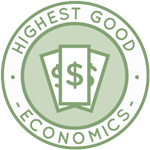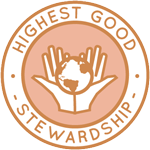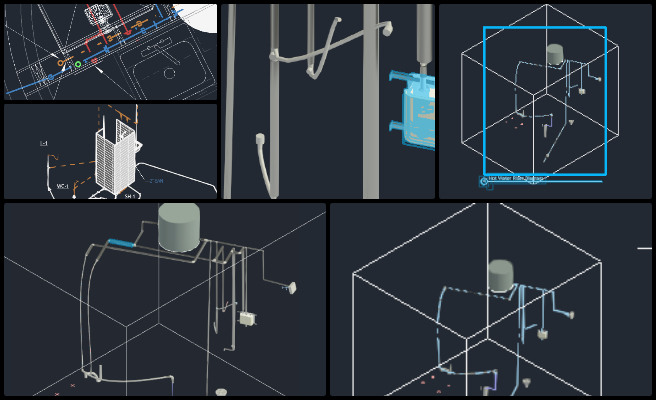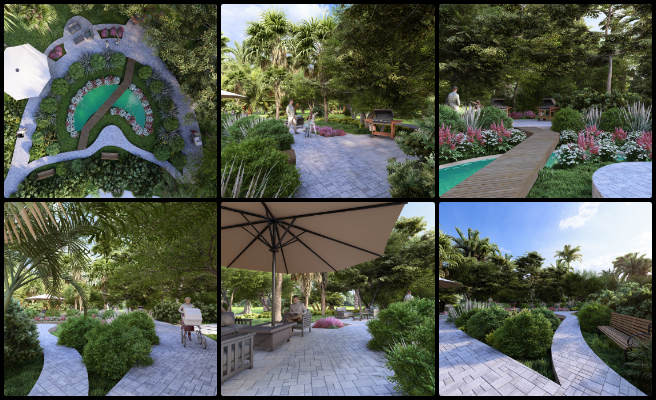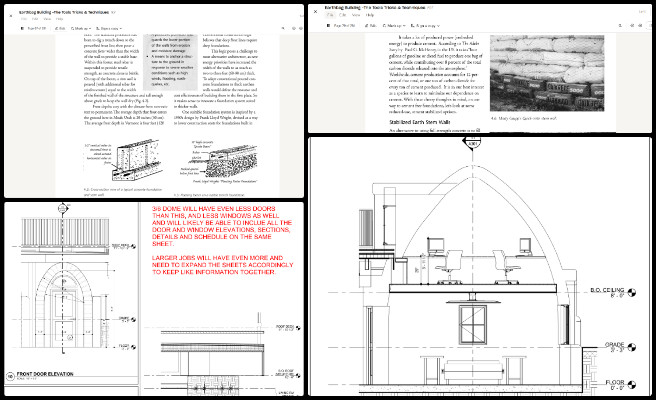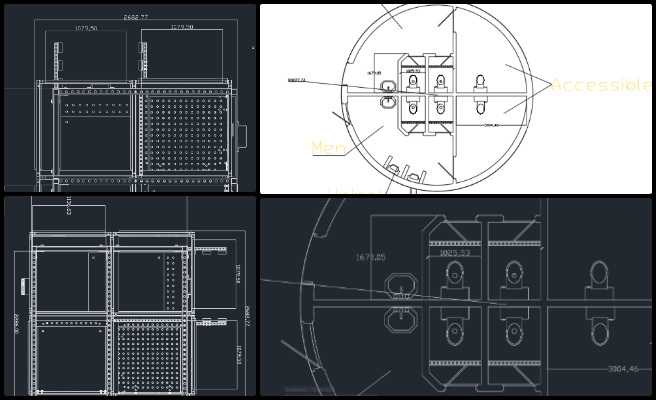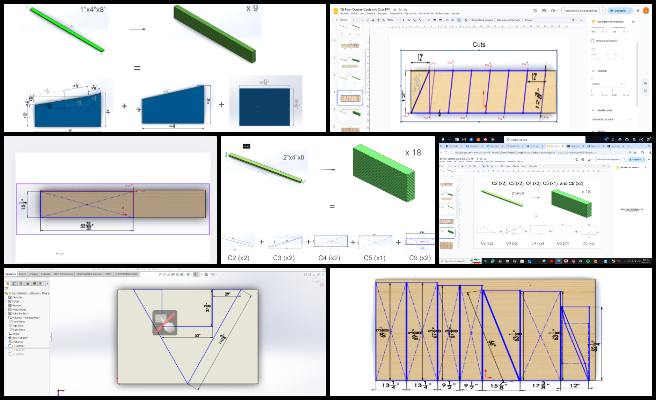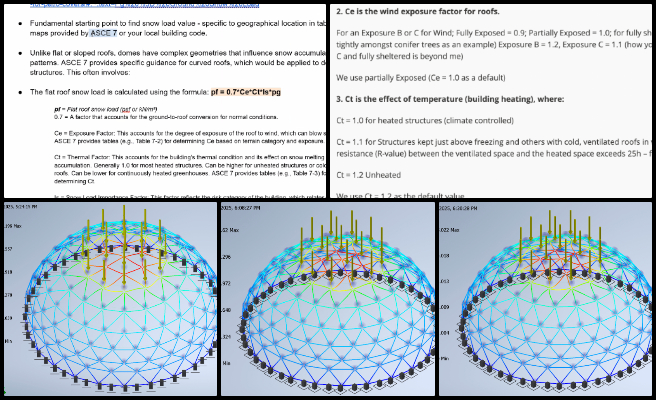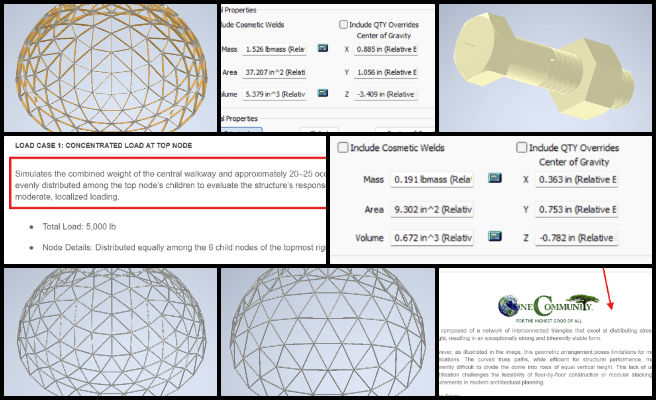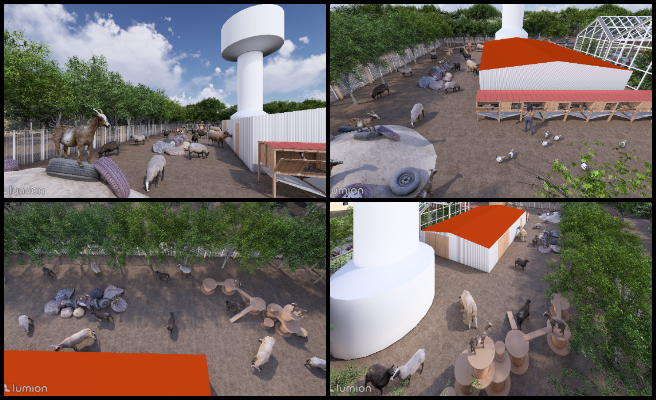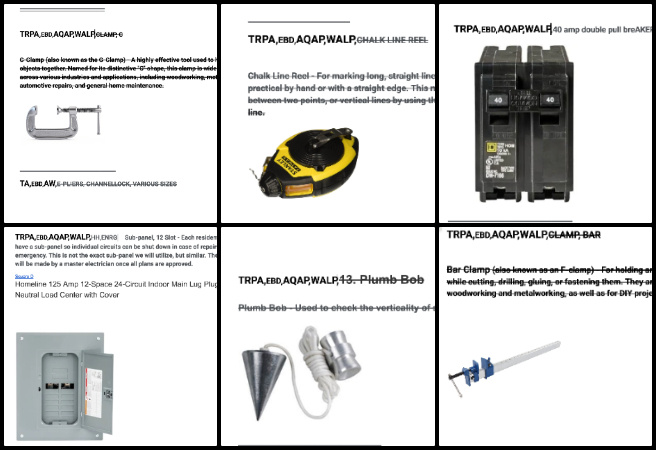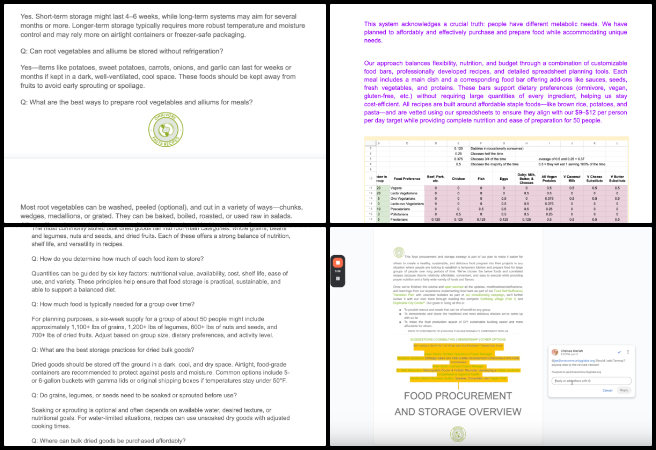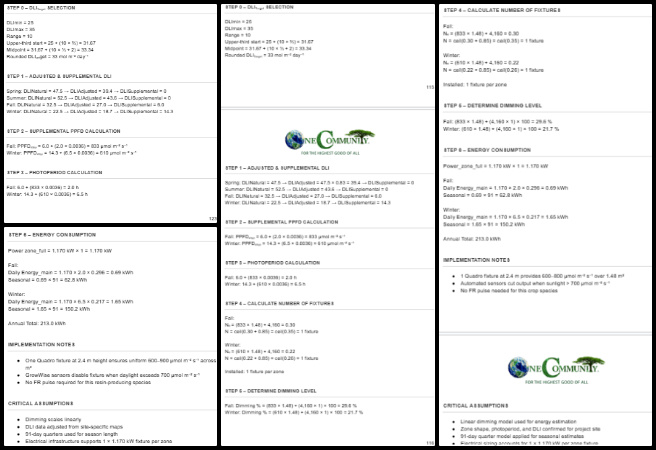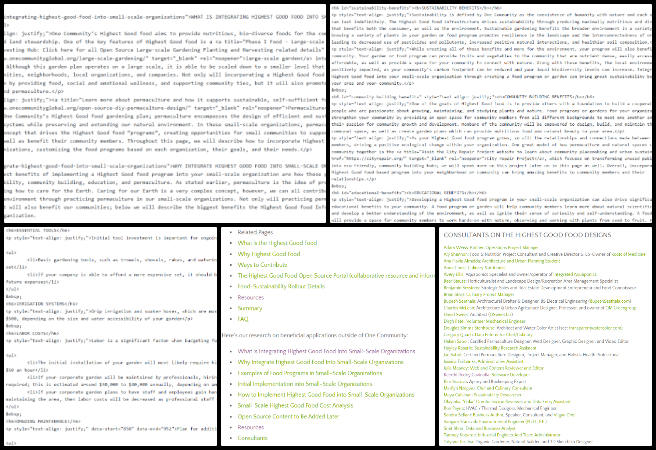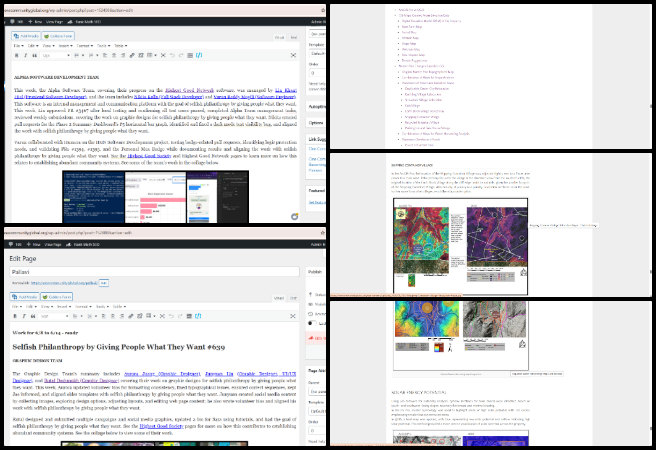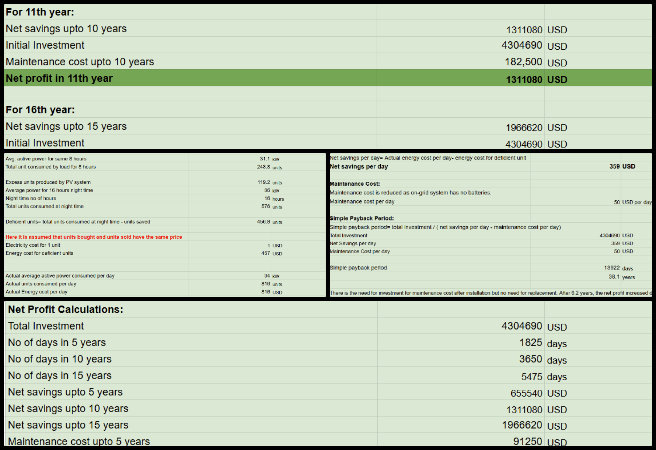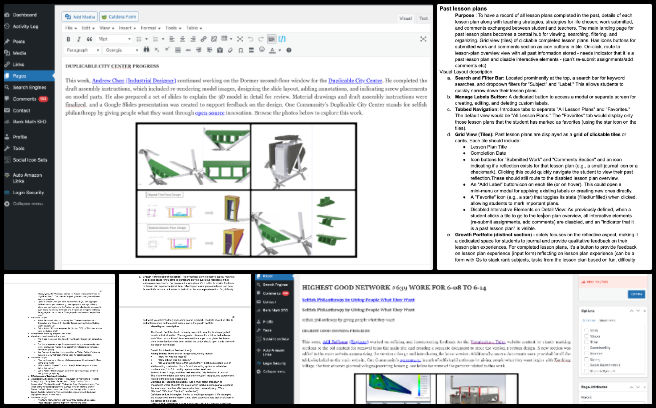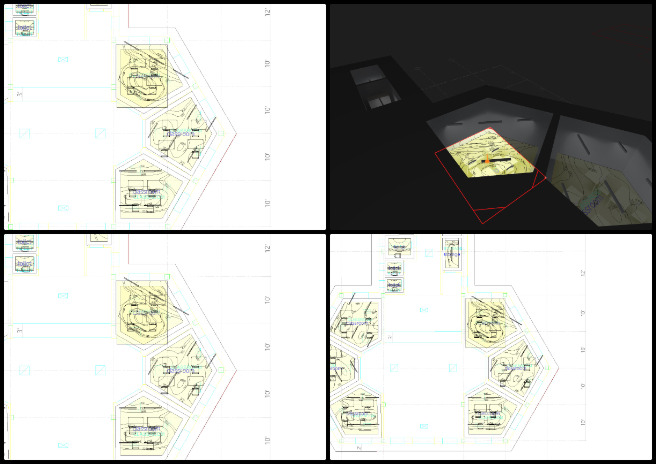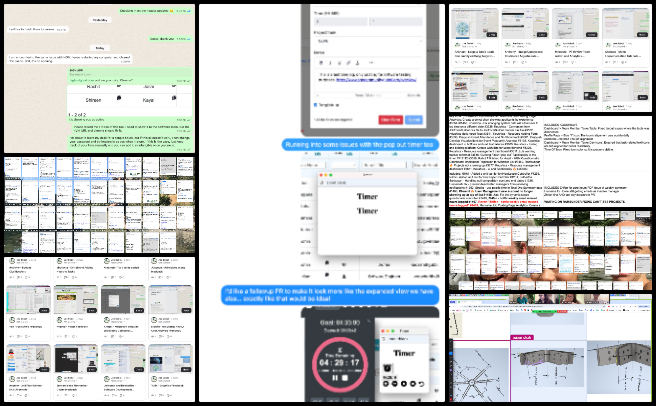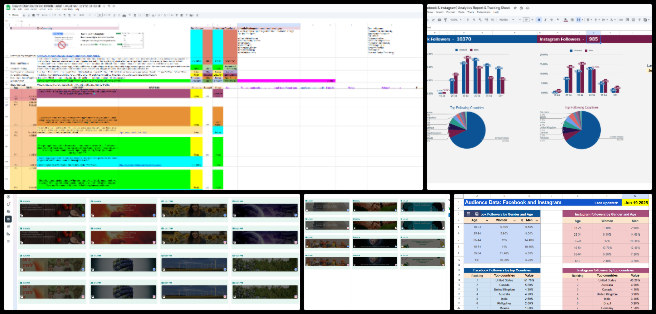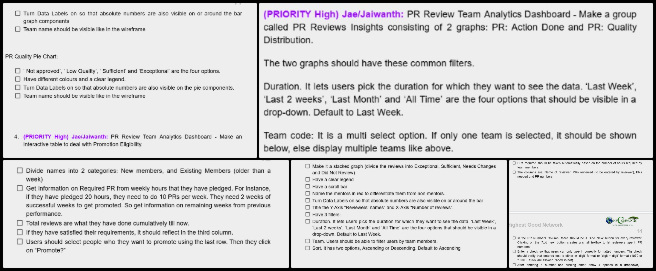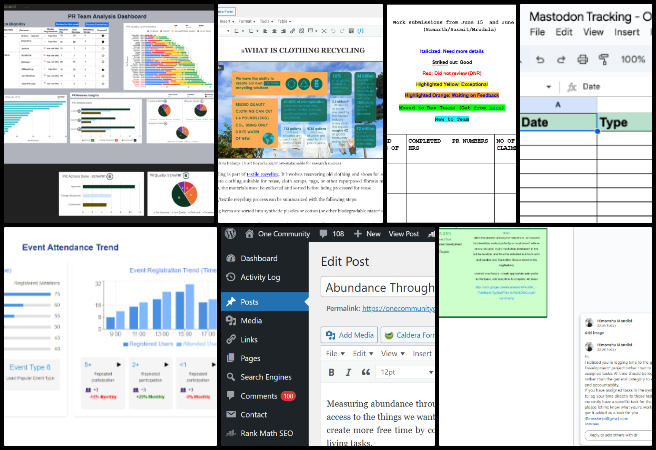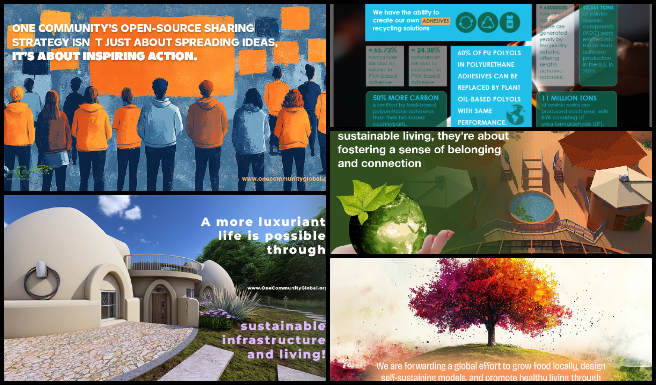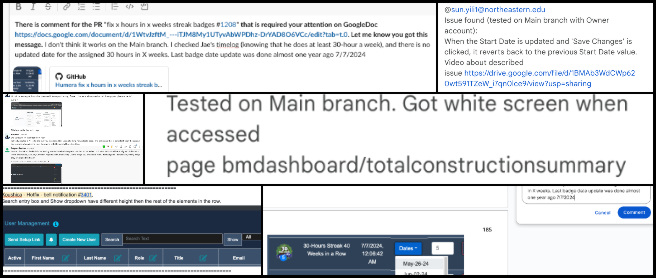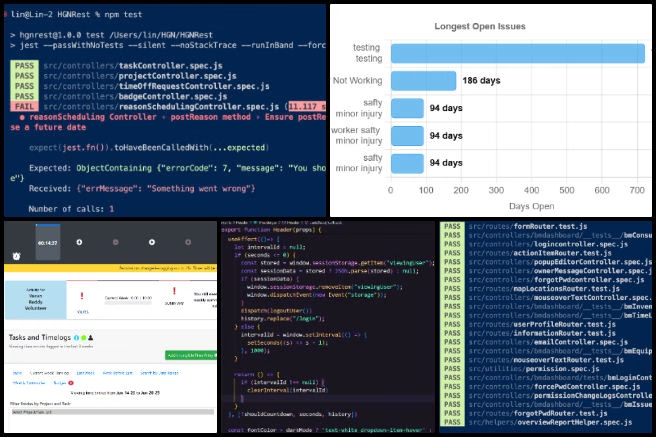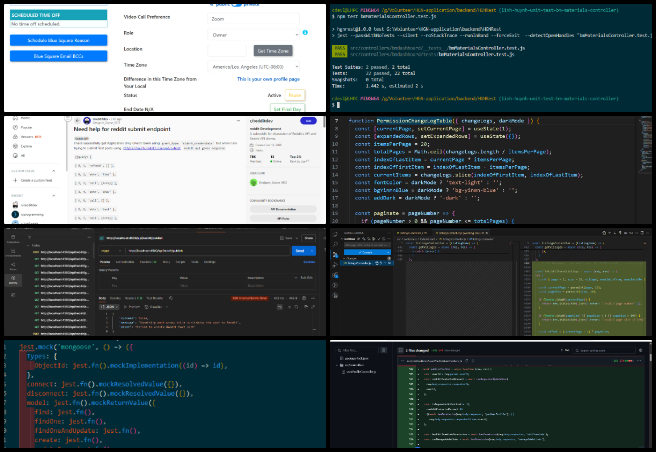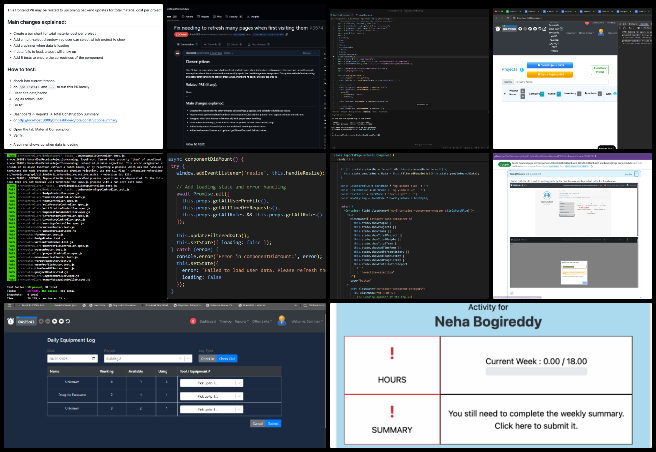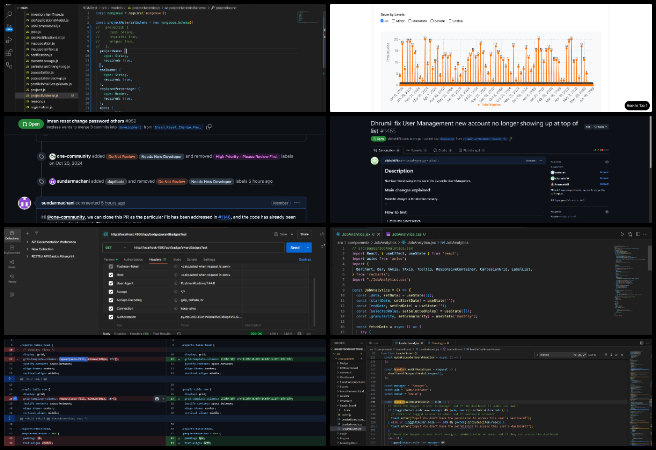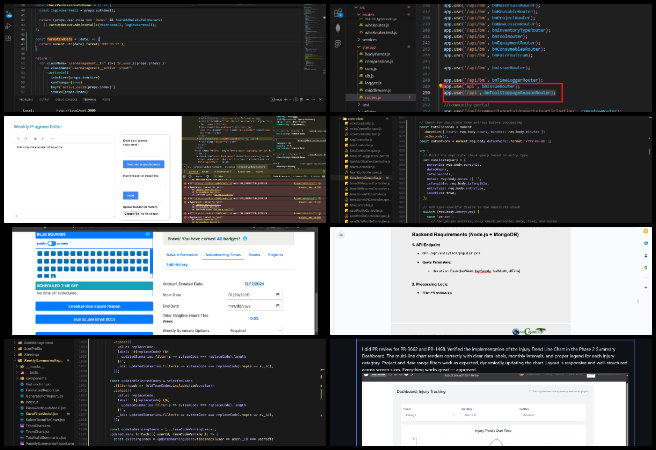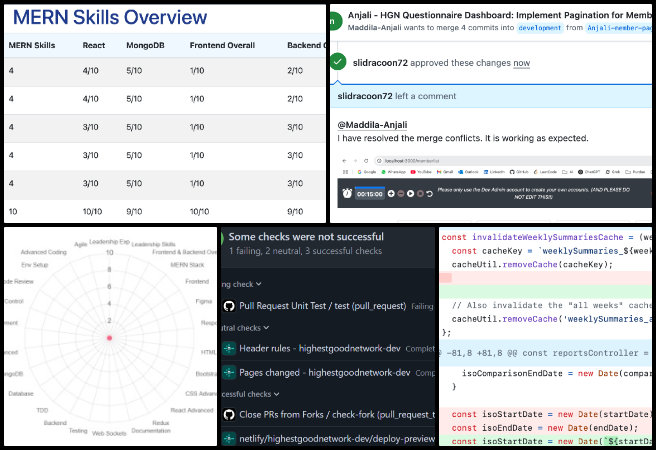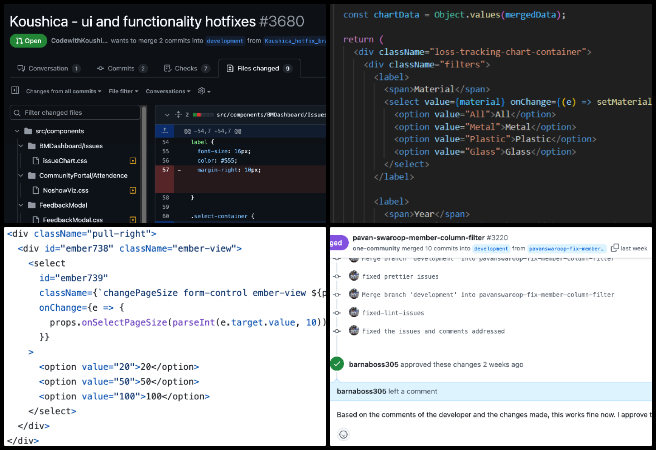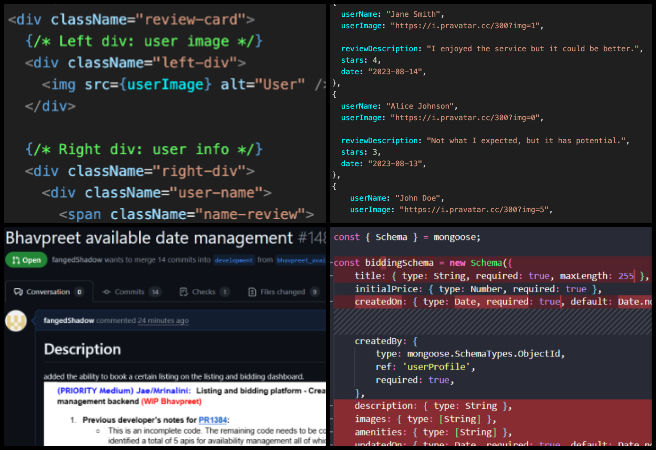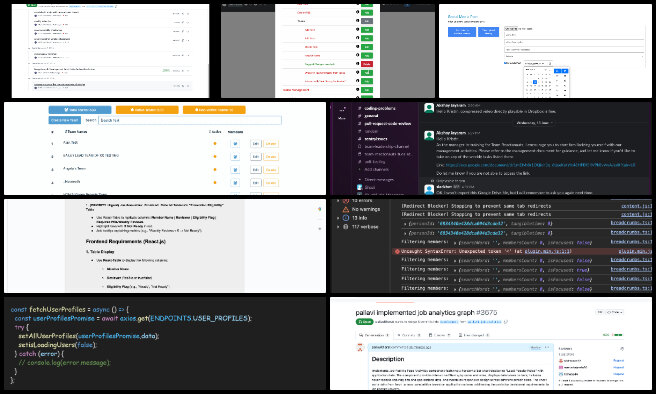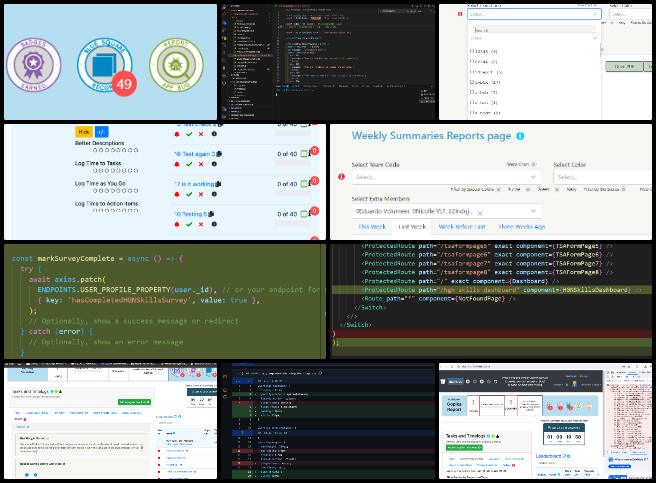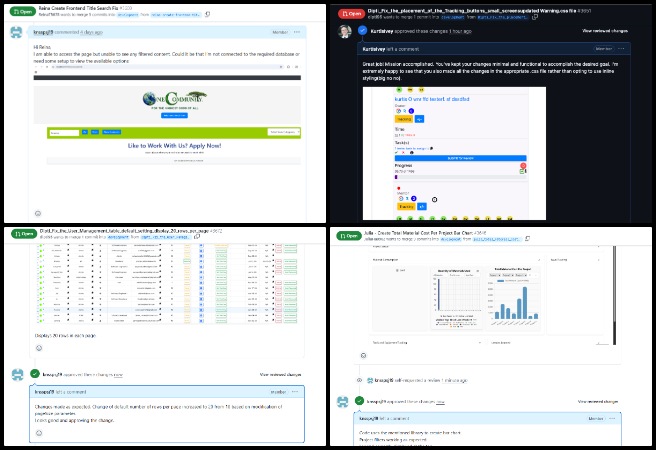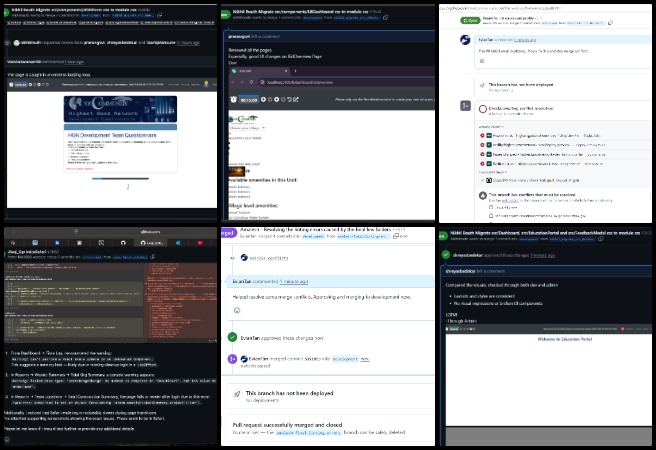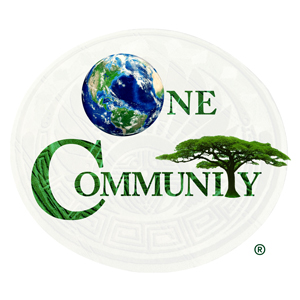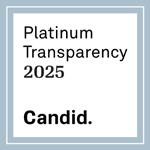Helping People Create Their Own Sustainable Futures – One Community Weekly Progress Update #640
One Community is dedicated to helping people create their own sustainable futures through open source sustainability solutions for all aspects of a thriving civilization. Our open source and free-shared tools, tutorials, and DIY resources include food, energy, housing, education, for-profit and non-profit economic design, social architecture, fulfilled living, global stewardship practices, and more. Together, these resources are intended to support the development of teacher/demonstration hubs that will continue to expand and evolve open source solutions for a better world.
- Here’s our project overview
- Here’s our world-change methodology
- Here’s how this becomes self-replicating
- Here’s how we are open source and free-sharing all the do-it-yourself designs
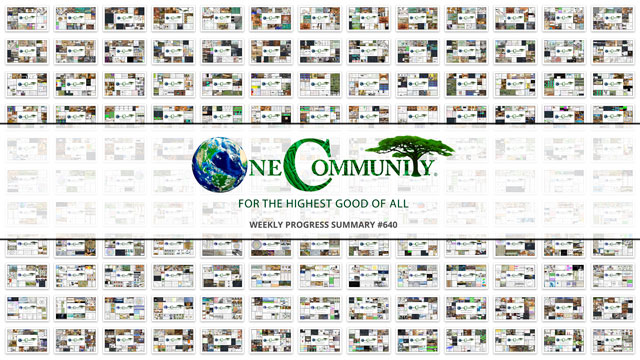
OUR MAIN OPEN SOURCE HUBS
Click on each icon to be taken to the corresponding Highest Good hub page.
One Community’s physical location will forward this movement as the first of many self-replicating teacher/demonstration communities, villages, and cities to be built around the world. This is the June 23rd, 2025 edition (#640) of our weekly progress update detailing our team’s development and accomplishments:
Helping People Create
Their Own Sustainable Futures
One Community Progress Update #640
DONATE | COLLABORATE | HELP WITH LARGE-SCALE FUNDING
CLICK HERE IF YOU’D LIKE TO RECEIVE AN EMAIL EACH WEEK WHEN WE RELEASE A NEW UPDATE
YOU CAN ALSO JOIN US THROUGH SOCIAL MEDIA
ONE COMMUNITY WEEKLY UPDATE DETAILS
HIGHEST GOOD HOUSING PROGRESS
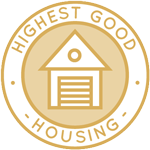 One Community is helping people create their own sustainable futures through Highest Good housing that is artistic and beautiful, more affordable, more space efficient, lasts longer, DIY buildable, and constructed with healthy and sustainable materials:
One Community is helping people create their own sustainable futures through Highest Good housing that is artistic and beautiful, more affordable, more space efficient, lasts longer, DIY buildable, and constructed with healthy and sustainable materials:
- Learn about: Our Upcoming Crowdfunding Campaign
- Learn about the different village models: 7 Sustainable Village Models
- Visit the open source portals for the first two: Earthbag Village OS Hub | Straw Bale Village OS Hub
This week, Derrell Brown (Plumbing Designer) continued working on the Earthbag Village 4-dome home plumbing and mechanical details. Derrell coordinated with Michaela to address follow-up items related to finalizing the plumbing plans. These items included analyzing the plumbing wall that contains the majority of fixtures in the Earthbag dome. Following the discussion, he updated fixtures in the model, including the shower and sink, to incorporate flex piping for clarity. He also added a separate hot and cold water riser diagram to the model. One Community’s open source launch of helping people create their own sustainable futures begins with Earthbag Village, the first of seven planned villages providing housing. See below for some of the pictures related to this work.
Faeq Abu Alia (Architectural Engineer) continued his work on the Earthbag Village. He began modeling the southwest-facing aquapini and walipini landscape in SketchUp and exported the model to Lumion for visualization. In Lumion, he added terrain features, placed vegetation components including trees, shrubs, and groundcover, applied realistic landscape materials to the earth surfaces, and inserted scaled human figures to illustrate design use. One Community’s open source launch of helping people create their own sustainable futures begins with Earthbag Village, the first of seven planned villages providing housing. See below for some of the pictures related to this work.
Karthik Pillai (Mechanical Engineer) focused on the development of the waste dumping mechanism for the Vermiculture Toilet facility, which has become the primary area of work. He focused on refining the waste dumping mechanism, specifically analyzing the current arm movement system to identify areas where motion could be simplified or adjusted for better efficiency. He explored various mechanical configurations and considered alternative joint placements to improve performance while reducing complexity. He and Adil discussed potential changes and began outlining a set of modifications that could be tested over the next few development cycles. Further, he continued drafting the report for the 4-dome cluster roof design, organizing structural details, spatial layout considerations, and preliminary material choices to ensure clarity and consistency in the documentation. For the vermiculture toilet project, Karthik shared the design of the unistrut assembly with the team, providing background context and functional requirements so that it could be translated into an accurate 2D technical drawing for further use in construction planning. As the first of seven planned villages, the Earthbag Village provides the initial housing within One Community’s open source designs for helping people create their own sustainable futures. See the work in the collage below.
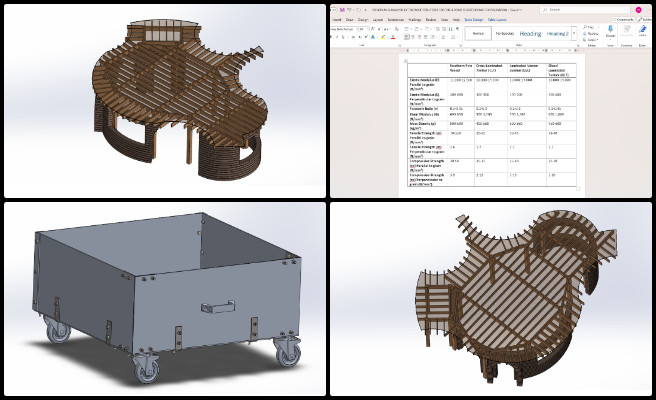
Ketsia Kayembe (Civil Engineer) began working on bringing the Earthbag Village files to construction-ready level. She worked on understanding the Earthbag Village AutoCAD drawing and plan files while waiting for the tutorial to be completed. She read materials related to the construction of the Earthbag Village and gathered information to support progress on the task. Ketsia reviewed the template document along with comments and previously completed drawings. She also scheduled a meeting with Rumi to review the work required and address any questions. One Community’s open source framework of helping people create their own sustainable futures begins with Earthbag Village, the first of seven planned villages providing housing. See below for some of the pictures related to this work. See below for some of the pictures related to this work.
Michaela Silva (Architect) continued working on finalizing the interior of the Earthbag Village. She modeled the framing for the loft floor using 2x8s spaced 16 inches on center and verified that the configuration meets load and deflection requirements based on the dome calculations excel file. Michaela also modeled the third rain collection gutter and cistern, determining that a 2-inch by 3-inch rectangular gutter or a 5-inch round gutter is required at all three collection points to handle the maximum rainfall intensity for a 100-year storm. The Earthbag village is the first of 7 villages to be built as part of One Community’s open source model for helping people create their own sustainable futures. See her work in the collage below.
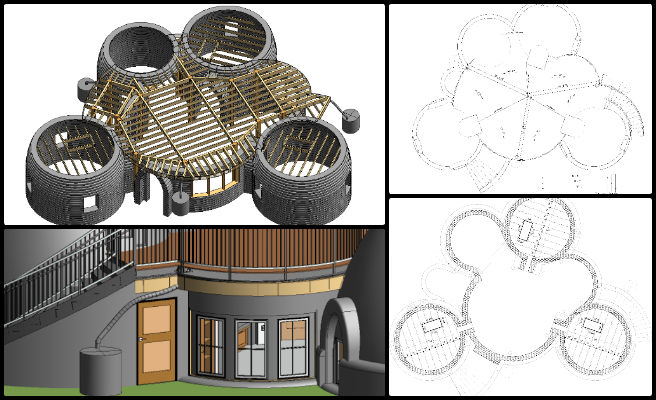
Rumi Shah (Civil Engineer) continued working on the Earthbag Village upgrades to bring our designs closer to construction-ready plans. The focus was on completing the tutorial and refining the 3-dome and 6-dome files. Work involved following a checklist to ensure the files met the required specifications and quality standards. Efforts were made to address any inconsistencies and optimize the overall structure. The process aimed at improving the clarity and functionality of the files for further use. One Community’s open source resources for helping people create their own sustainable futures begins with the Earthbag Village, the first of seven planned villages providing housing. See below for some of the pictures related to this work.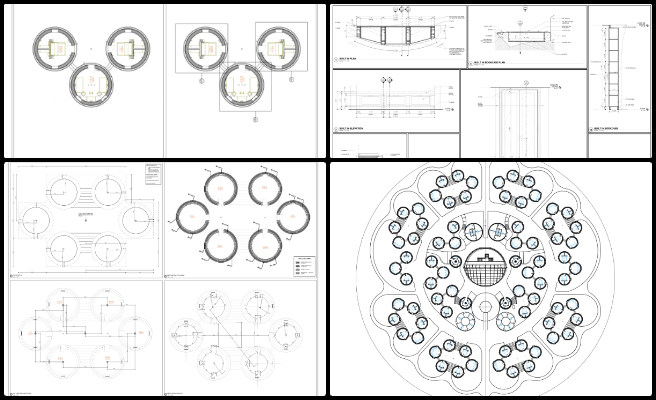
Tejas (Mechanical Engineer) finished the onboarding orientation and began work on the Vermiculture Toilet. Work continued on the AutoCAD layout with a focus on organizing the vermiculture assembly into two distinct sections. The top section was designated for toilets, wash basins, and urinals, while the lower section was allocated for the vermiculture tanks. Separating the layout in this manner allowed for improved visualization of each area. One Community’s open source launch of helping people create their own sustainable futures begins with Earthbag Village, the first of seven planned villages providing housing. See below for some of the pictures related to this work.
DUPLICABLE CITY CENTER PROGRESS
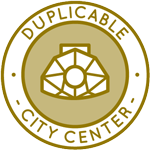 One Community is helping people create their own sustainable futures through a Duplicable and Sustainable City Center that is LEED Platinum certified/Sustainable, can feed 200 people at a time, provide laundry for over 300 people, is beautiful, spacious, and saves resources, money, and space:
One Community is helping people create their own sustainable futures through a Duplicable and Sustainable City Center that is LEED Platinum certified/Sustainable, can feed 200 people at a time, provide laundry for over 300 people, is beautiful, spacious, and saves resources, money, and space:
- Learn about this building and it’s function: Duplicable City Center Open Source Hub
This week, Ariana Virginia Gutierrez Doria Medina (Industrial Designer) continued the analysis and cost estimation of the windows for the Duplicable City Center. Her team worked on the suggested corrections to improve the first assigned task. Measurement units were changed from decimals to fractions, and the mayority of text was removed to simplify the presentation. In addition, the images are showing the required cuts for each wood board to illustrate the amount of work required to build the windows. The Duplicable City Center showcases One Community’s open-source contribution to helping people create their own sustainable futures. Browse the visuals below.
Shu-Tsun (Engineer) continued working on the Duplicable City Center by conducting the structural and frame analysis of the City Center dome using Autodesk Inventor, as well as working on the spreadsheet for which she is responsible. She performed a detailed snow load analysis using real project data to validate and refine her updated model. She also compared snow loads across different roof types, focusing on the differences between flat and dome structures. In addition, she met with Dipak to review her work and will revise her model based on his feedback and suggestions. One Community’s Duplicable City Center is an open-source model for helping people create their own sustainable futures. Browse the images below.
Srujan Pandya (Mechanical Engineer) continued helping with the Duplicable City Center FEA analysis. He focused on finalizing the editing for the City Center Dome report. Images and captions were added for all three dome versions, with intros to each section explaining the information for the technical and the general audience. The vertical loads section was revised to include references to all three designs, not just two. References to version-specific elements were added in the frame analysis section to improve clarity. Mentions of weight values (including nuts and bolts) throughout the document were linked directly to the weight calculations sheet or section to maintain consistency. Other general formatting considerations were implemented based on the set format for the website. Through the Duplicable City Center, One Community promotes helping people create their own sustainable futures using open-source design. Check out the photos below.
Yan “Jenni” Zu (Architectural Designer) continued her work on the greenhouse area of the Duplicable City Center. She adjusted the placement and types of animals in the animal area to create a more natural and balanced composition. She carefully positioned each animal to enhance interaction with the environment and improve the overall realism of the scene. In addition, Jenni optimized the plants in the animal area by selecting more suitable species and refining their distribution to better complement the layout and visual flow. These adjustments improved both the ecological diversity and the aesthetic appeal of the space. The combined updates contributed to a more vivid, dynamic, and immersive environment that aligns with the project’s design goals. As an open-source hub, the Duplicable City Center supports helping people create their own sustainable futures with practical solutions. Browse the photos below to explore this work.
HIGHEST GOOD FOOD PROGRESS
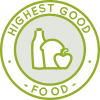 One Community is helping people create their own sustainable futures through Highest Good food that is more diverse, more nutritious, locally grown and sustainable, and part of our open source botanical garden model to support and share bio-diversity:
One Community is helping people create their own sustainable futures through Highest Good food that is more diverse, more nutritious, locally grown and sustainable, and part of our open source botanical garden model to support and share bio-diversity:
- Learn about the structures: Hoop House Hub | Aquapini & Walipini Open Source Hub
- See what we’ll be growing: Gardens & Hoop Houses | Large-scale Structures | Food Forest | TA
This week, the core team continued working on the Master Tools, Equipment, and Materials/Supplies document. They continued changing the shortened abbreviations on the doc while adding the wooden and magnesium float entries and eliminating the duplication of the jack plane entry. All fencing materials were added for the Large Garden (LG), Botanical Garden (BG), and Hoop House (HH) projects. The Highest Good Food initiative is a key component of One Community’s open source plans, focused on helping people create their own sustainable futures, and exemplifies the organization’s commitment through innovative design and implementation. Below are some of the images showcasing this work.
Chelsea Mariah Stellmach (Project Manager) continued her work on the Transition Food Self-sufficiency Plan menus and customization spreadsheets. She reviewed the older “Suggested Initial Dry Pantry” content and reformatted it for inclusion in the FAQ section of the food procurement and storage plan. She created a new FAQ entry specifically focused on whole grains, explaining the exclusion of wheat and limited use of gluten-containing grains while providing a general percentage-based breakdown of gluten-free options. This work helps support users who are not using the recipe tool but still want a general reference. Chelsea also followed guidance to restructure and move outdated or overly detailed content to a supplemental section, aligning it with the current version of the plan and ensuring it reflects current formatting standards and nutritional guidance. As an essential aspect of One Community’s open source goals, the Highest Good Food initiative supports helping people create their own sustainable futures as a foundation for sustainable living. Below are some of the images showcasing this work.
Jay Nair (BIM Designer) continued working on Aquapini and Walipini Planting and Harvesting lighting and HVAC design. He continued working on the lighting energy calculations for the zones in Greenhouse Walipini 1. The task involved applying zone-specific data, reviewing fixture specifications, and updating formulas to ensure the calculations accurately reflect the energy needs across the different sections of the greenhouse while maintaining alignment with the project’s standardized format. The Highest Good Food initiative plays a leading role in One Community’s open source platform, promoting and helping people create their own sustainable futures through sustainable and participatory development. Below are some of the images showcasing this work.
Keerthi Reddy Gavinolla (Software Developer) continued enhancing the Highest Good Food page by adding content focused on small-business and urban community solutions. She updated the Moonfall, Expressers, and Lucky Star Team Blog #639. Completed final edits to the Highest Good Food Infrastructure website, submitted it for review, and marked it as complete. Removed unnecessary <span> code from the site to clean up formatting. Keerthi also started working on editing and publishing the Soil Amendment page updates. Built on One Community’s open source foundation, the Highest Good Food initiative is dedicated to helping people create their own sustainable futures, empowering communities through self-sustaining systems. Her contributions are showcased in the collage below.
Pallavi Deshmukh (Software Engineer) continued working on adding the new Zenapini 2 content to the Aquapini and Walipini Planting and Harvesting page. She completed nine interviews and submitted the required details. She worked on the web page design by integrating Chris’s GIS content into the permaculture page using the web design tutorial and addressed all review comments from Jae. She checked that all links and images were properly connected to the appropriate pages. Pallavi also created blog 639 and reviewed team members work and incorporated their contributions to maintain completeness of the content. In alignment with One Community’s open source objectives, the Highest Good Food project integrates helping people create their own sustainable futures into a larger vision of regenerative living. Her contributions are highlighted in the collage below.
HIGHEST GOOD ENERGY PROGRESS
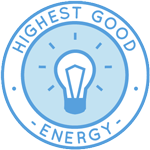 One Community is helping people create their own sustainable futures through Highest Good energy that is more sustainable, resilient, supports self-sufficiency and includes solar, wind, hydro and more:
One Community is helping people create their own sustainable futures through Highest Good energy that is more sustainable, resilient, supports self-sufficiency and includes solar, wind, hydro and more:
- Learn about the open source sustainable-energy foundations: Solar, Hydro, and Wind
- Explore our research into the most sustainable products and companies for saving water and energy: Insulation, Eco-laundry, Lightbulbs and Light Bulb Companies, Doors and Door Companies, Windows and Window Companies, Toilets, Faucets and Faucet Accessories, Urinals, and more.
This week, Dishita Jain (Data Analyst) continued supporting with the Highest Good Energy research and cost analysis for helping people create their own sustainable futures. Her tasks included linking spreadsheets, updating document references, and organizing related image files into a centralized Dropbox folder. Visual assets were prepared for web integration by adding captions and gray bars beneath images to hold spreadsheet links. Chart formatting and design were also updated to improve visual clarity. Additionally, Dishita contributed to OC Administration tasks related to Training Team review and feedback, which involved reviewing peer submissions, incorporating feedback into personal documentation, providing comments on the Step 4 document, and compiling visual collages for two review teams. One Community’s open source mission is powerfully reflected in the Highest Good Energy initiative, which advances helping people create their own sustainable futures as a model for global benefit. Below are some of the images showcasing this work.
Muhammad Sarmad Tariq (Electrical Engineer) continued contributing to the Highest Good Energy component by assisting with off-grid and grid-tied solar microgrid. He submitted a summary on integrating net-zero PV system in the report on the calculator for calculating profit and net savings for an off-grid and a grid-tied solar PV system. He started calculating the investment on a yearly basis for the net-zero PV system size. This investment is to be calculated on a 5-yearly basis and will form the basis for calculating the final payback period for a net-zero PV system. Guided by its open source philosophy, One Community developed the Highest Good Energy initiative to pioneer sustainable solutions by helping people create their own sustainable futures. His contributions are shown in the collage below.
HIGHEST GOOD EDUCATION PROGRESS
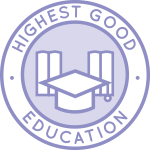 One Community is helping people create their own sustainable futures through Highest Good education that is for all ages, applicable in any environment, adaptable to individual needs, far exceeds traditional education standards, and more fun for both the teachers and the students. This component of One Community is about 95% complete with only the Open Source School Licensing and Ultimate Classroom construction and assembly details remaining to be finished. We’ll report on the final two elements to be finished as we develop them. With over 8 years of work invested in the process, the sections below are all complete until we move onto the property and continue the development and open sourcing process with teachers and students – a development process that is built directly into the structure of the education program and everything else we’re creating too:
One Community is helping people create their own sustainable futures through Highest Good education that is for all ages, applicable in any environment, adaptable to individual needs, far exceeds traditional education standards, and more fun for both the teachers and the students. This component of One Community is about 95% complete with only the Open Source School Licensing and Ultimate Classroom construction and assembly details remaining to be finished. We’ll report on the final two elements to be finished as we develop them. With over 8 years of work invested in the process, the sections below are all complete until we move onto the property and continue the development and open sourcing process with teachers and students – a development process that is built directly into the structure of the education program and everything else we’re creating too:
- Program Overview: Education Open Source Hub
- How the components work together in designing human orchestrated eco-abundance: How to use the Education for Life Program
- Lesson Plans for Life – Lesson Plans How-to
- Foundations of Outstanding Leaders, Teachers, and Communicators
- Curriculum for Life
- Teaching Strategies for Life
- Learning Tools and Toys for Life
- Evaluation and Evolution
This week, Harshitha Rayapati (Program Manager) continued work on detailing deliverables for the Highest Good education software platform, outlining various components, developing Figma designs, and expanding the visual layout of the student dashboard. She focused on organizing and refining the HGN Phase 4 software components document by updating the status of various deliverables, linking relevant content, removing outdated sections, and enhancing overall navigation. She collaborated with Ravi to improve the student lessons dashboard view and clarify the growth portfolio and knowledge evolution sections. Harshitha also updated the teacher dashboard workflow, specifically refining the evaluation results page and enhancing the ability to view student learning insights. In addition, Harshitha compiled the weekly blog update, reviewed the Duplicity City Center and Housing Teams’ weekly progress, edited the blog page, and created image collages. The One Community model of helping people create their own sustainable futures, exemplified by sustainably built classrooms like this, represents sustainable change for the whole planet. See the collage below for her work.
Mai Mohamed (Electrical Engineer) continued working on drawing the building and its rooms, determining the story heights, and establishing the scale and X-Y coordinates to add spaces identified as classrooms. She worked on lighting analysis using DIALux evo by creating a calculation surface to measure the uniformity ratio (Uo) across a defined area. Mai also selected the appropriate space, accurately positioned the calculation surface within the environment, and configured the settings to extract relevant data on lighting uniformity for evaluation. Sustainably built classrooms like this exemplify the One Community model of helping people create their own sustainable futures and driving global sustainable change. See the collage below for her work.
HIGHEST GOOD SOCIETY PROGRESS
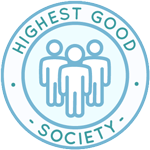 One Community is helping people create their own sustainable futures through a Highest Good society approach to living that is founded on fulfilled living, the study of meeting human needs, Community, and making a difference in the world:
One Community is helping people create their own sustainable futures through a Highest Good society approach to living that is founded on fulfilled living, the study of meeting human needs, Community, and making a difference in the world:
- Read the Highest Good society overview: Highest Good Society
- Learn about the model for fulfilled living and sharing: A Day in the Life
- Learn about the 4 economic models: RBE | For-profit | Non-profit | Entrepreneurship
- Learn about our open source community collaboration and management software: The Highest Good Network
This week, the core team completed over 47 hours managing One Community’s volunteer-work review not included above, emails, social media accounts, web development, new bug identification and bug-fix integration for the Highest Good Network software, and interviewing and getting set up new volunteer team members. They also shot and incorporated the video above that talks about how helping people create their own sustainable futures is a foundation of the bigger picture of everything One Community is doing. The image below shows some of this work.
Govind Sajithkumar (Project Manager) continued focusing on analytics and content management for Facebook and Instagram on Meta platforms. He managed content for Meta platforms by refreshing the Facebook and Instagram feeds with new, scheduled posts. He recorded content details and metadata in the Open Source spreadsheet and updated tracking documentation. He also updated social media analytics by collecting and processing new audience data, adding the refreshed demographics and engagement statistics to the master spreadsheet. Additionally, Govind performed PR Review Team Management, which involved providing feedback on team members’ documents, modifying a WordPress site with the team’s weekly summary and collage, and updated the PR Review Team Table and HGN PR spreadsheet. He also reviewed fellow admins and submitted his admin feedback table. This effort supports One Community’s broader mission of helping people create their own sustainable futures. The images below showcase some of this work.
Jaiwanth Reddy Adavalli (Project Manager) continued developing the Job Applicants page along with components of the Highest Good Network Phase 2 and Phase 4 dashboards, including the PR Team analytics section. He worked on the development of the PR Review Team Analytics Software and Dashboard. Jaiwanth also discussed possible features and the overall design of the software with Neeharika, created wireframes, and wrote action items to guide further development. As part of the PR review team, he reviewed the pull requests of the volunteer team assigned to him. This project plays an important role in One Community’s commitment to helping people create their own sustainable futures. The following images show his work for the week.
ADMINISTRATION TEAM
The Administration Team summary, covering their work administrating and managing most of One Community’s ongoing process for helping people create their own sustainable futures was managed by Bhakti Tigdi (Project Manager) and includes Anuneet Kaur (Administrator), Himanshu Mandloi (Engineering Project Manager), Khushie Zaveri (Communication Strategist), Neeharika Kamireddy (Data Analyst), Olawunmi “Ola” Ijisesan (Administrative and Management Support), Rachna Malav (Data Analyst), and Rishi Sundara (Quality Control Engineer and Team Administrator). The Highest Good Network software is how we’ll be managing and objectively measuring our process for helping people create their own sustainable futures through our social architecture, construction, production, and maintenance processes.
This week, the Administration team contributed to key operational, content, and coordination efforts that support One Community’s long-term sustainability and outreach goals. Anuneet focused on researching sustainable faucet solutions, compressing and optimizing images for SEO, and updating various Highest Good webpages. She also coordinated volunteer bios, maintained the volunteer tracking spreadsheet, and initiated content development for the Licensing and Accreditation page under the Highest Good Education Program. Himanshu managed the daily timelog process, communicated follow-ups via WhatsApp to maintain task alignment, and compiled weekly progress images. He also authored a blog post aligned with One Community’s mission and reviewed admin work for accuracy and completeness. Khushie finalized the social media calendar for the metric system campaign, created post content with platform-specific strategies, incorporated feedback, and completed weekly admin tasks such as reviewing blogs and supporting other teams.
Neeharika completed and finalized the PR data analysis dashboard after multiple rounds of feedback and also participated in the weekly hiring process. Ola ensured proper execution of review processes for the PR team, updated documentation, and maintained image and folder organization to support weekly reporting. Olimpia continued work on the social media master dashboard by developing key KPI visualizations, reviewed blog submissions, and supported the Skye and Reactronauts teams with blog setup. Rachna focused on pending SEO page updates and responded to outstanding communication items. However, interview scheduling challenges limited her participation in candidate screening. Rishi merged individual blogs into the consolidated weekly update blog post, tested a large number of pending and completed pull requests, and assigned new action items to the development team to maintain workflow continuity. This work contributes to One Community’s commitment to helping people create their own sustainable futures. See below to view images of their work.
GRAPHIC DESIGN TEAM
The Graphic Design Team’s summary includes Aurora Juang (Graphic Designer), Junyuan Liu (Graphic Designer, UI/UX Designer), Yulin Li (Graphic Designer), and Rutal Deshmukh (Graphic Designer), covering their work on graphic designs for helping people create their own sustainable futures.
This week, Aurora designed social media images to boost brand engagement, using past data and visual trends to create a consistent style that supports helping people create their own sustainable futures. Junyuan created social media content by collecting images, exploring design options, adjusting layouts, and inserting text for the “Most Sustainable” image, covering work on graphic design. She also brainstormed approaches for future image creation. Rutal updated social media graphics to match One Community’s visual style, submitted new designs and a Metric Campaign logo for review, and contributed to helping people create their own sustainable futures. Michelle created social media posters using 4-dome renderings, applied formatting guidelines, submitted them for feedback, and confirmed tasks with her manager—all while supporting helping people create their own sustainable futures. See the Highest Good Society pages for more on how this contributes to helping people create their own sustainable futures. See the collage below to view some of their work.
HIGHEST GOOD NETWORK PROGRESS
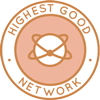 One Community is helping people create their own sustainable futures through open source Highest Good Network® software that is a web-based application for collaboration, time tracking, and objective data collection. The purpose of the Highest Good Network is to provide software for internal operations and external cooperation. It is being designed for global use in support of the different countries and communities replicating the One Community sustainable village models and related components.
One Community is helping people create their own sustainable futures through open source Highest Good Network® software that is a web-based application for collaboration, time tracking, and objective data collection. The purpose of the Highest Good Network is to provide software for internal operations and external cooperation. It is being designed for global use in support of the different countries and communities replicating the One Community sustainable village models and related components.
- Learn about our open source community collaboration and management software: The Highest Good Network
This week, the core team continued their work on the Highest Good Network pull requests and confirmed the following fixes: revision of the navbar with new Phase III requirements (#3391); user notifications via popup when permissions are changed (#3294 + #1278 → RW3395 + #1323); correction of project and task hours (#3193); adjustments to the People Report for Projects and Tasks With Completed Hours, including number and percentage toggles and improved formatting (PR #3594); and the creation of the Village Map selection frontend (#3293). Unresolved issues include: the job title field remaining empty (#1192), for which a video was recorded and a message sent to the developer on Slack; incorrect behavior of the streak badge for “x hours in x weeks” (#1208), with a description and screenshot shared on Slack; formatting inconsistencies in the bell notification feature, where the search box and dropdown are misaligned with surrounding elements (#3401); and a white screen error when accessing the Summary Dashboard test page (#3275).
Additionally, the team assigned a task to Akshay J to add a timelog icon and link to the bottom-right corner of the first column on the User Management page (20 hours), and communicated with a volunteer on Slack regarding layout issues in PR #3391. These efforts represent incremental progress in helping people create their own sustainable futures. See the Highest Good Society and Highest Good Network pages for more on how this aligns with One Community’s commitment to helping people create their own sustainable futures. The collage below shows some of this work.
ALPHA SOFTWARE DEVELOPMENT TEAM
The Alpha Software Team, covering their progress on the Highest Good Network software, was managed by Lin Khant Htel (Frontend Software Developer), and the team includes Nikita Kolla (Full Stack Developer), and Varun Reddy Mogili (Software Engineer). This software is an internal management and communication platform with the goal of helping people create their own sustainable futures.
This week, Lin approved PR #1461 after testing it locally and confirming all test cases passed. He also reviewed the Alpha team’s weekly summaries, photos, and videos, and handled team management duties, while supporting helping people create their own sustainable futures. Nikita fixed a dark mode bug on the dashboard by refactoring the countdown timer using the useEffect hook, improving color handling, and eliminating repeated setTimeout calls. She submitted a pull request for the changes. Varun created text modules and implemented a force logout feature that detects permission changes, shows a PopUpBar, stops the countdown timer, and logs the user out—with the goal of helping people create their own sustainable futures. He resolved initial issues and began debugging the remaining problems. See the Highest Good Society and Highest Good Network pages to learn more on how this relates to selfish philanthropy by giving people what they want. See some of the team’s work in the collage below.
BLUE STEEL SOFTWARE DEVELOPMENT TEAM
The Blue Steel Team’s summary, presenting their work on the Highest Good Network software was managed by Sheetal Mangate (Software Engineer) and includes Humemah Khalid (Software Engineer/Backend Developer), Linh Huynh (Software Engineer), and Ramakrishna Aruva (Software Engineer). The Highest Good Network software is how we’ll be managing and objectively measuring our process for helping people create their own sustainable futures.
This week, Linh completed writing and finalizing unit tests for the bmMaterialsController.js file, ensuring all test cases passed and were integrated with GitHub CI checks. Her work involved mocking Mongoose operations and addressing edge cases such as stock validation, error responses, and conditional updates for material records. A bug related to MongoMemoryServer was identified and resolved by removing its usage to maintain CI compatibility. Time entries were updated to reflect all contributions, and she is now preparing to begin unit testing the next controller modules in the /bmdashboard backend system. This work contributes to One Community’s commitment to helping people create their own sustainable futures.
Ramakrishna enhanced the putUserProfile API by adding logic to capture the timestamp of each weekly summary update, appending the current epoch time to the summarySubmissionDates array when weeklySummaries are modified. These updates were integrated into the existing codebase while preserving permission checks, caching, and audit logging. After validating the changes locally, he committed and pushed them to the feature branch. He also began backend development for the listings module by pulling the latest development changes, resolving merge conflicts, and implementing logic to fetch filtered listings, followed by committing the updates with supporting documentation. This effort reflects One Community’s focus on helping people create their own sustainable futures. Sheetal investigated why submitting a post using a Reddit access token was failing. To narrow down the issue, she tested other Reddit API endpoints such as retrieving user scope and verifying post requirements using the same token. All these endpoints responded as expected—except the submit API—confirming that the token is valid and authenticated but may not be tied to a user. She was able to successfully access endpoints like /api/v1/me and /api/v1/me/prefs. See the Highest Good Society and Highest Good Network pages to learn more about how their work contributes to helping people create their own sustainable futures. See below to view images of their work.
BINARY BRIGADE SOFTWARE DEVELOPMENT TEAM
The Binary Brigade Team’s summary, overseeing advancements in the Highest Good Network, was managed by Dishita Jain (Data Analyst) and includes Amalesh Arivanan (Software Engineer), Anirudh Sampath Kumar (Software Developer), Geeta Matkar (Software Engineer), Jitesh Parapoil (Software Engineer), Jaissica Hora (Software Engineer), Nikhil Routh (Software Engineer), Ramsundar Konety Govindarajan (Software Engineer), Taariq Mansurie (Full-Stack Developer), Vamshi Gutha (Full-Stack Developer), and Samman Baidya (Software Engineer). The Highest Good Network software is how we’ll be managing and objectively measuring our progress in helping people create their own sustainable futures through our social architecture, construction, production, and maintenance processes.
This week, Amalesh wrote unit tests for the bmMaterialsController.js, helpCategoryController.js, and hgnFormResponseController.js files. His work included writing test cases, debugging failing scenarios, and resolving merge conflicts caused by changes in related files. He tested and documented everything with screenshots and videos, uploading them to the shared Dropbox folder using the required naming conventions. Anirudh addressed a visual bug affecting the hours bar on the main dashboard by identifying the affected pixel range and adjusting the relevant CSS files to restore proper layout across screen widths. Geeta resolved a backend error following a recent pull and investigated miscalculations in the people reports by reviewing both frontend and backend components. Jaissica reviewed and reported multiple high-priority issues, including a broken “Share PDF” button, hardcoded values in metric cards, a MissingSchemaError from an unregistered model, Redis ECONNREFUSED errors, and a recurring time tracker issue caused by local caching. These contributions align with One Community’s commitment to helping people create their own sustainable futures.
Jitesh worked on debugging a white screen issue encountered when navigating to a specific page. He reviewed the routing structure and component rendering and attempted to open a pull request, which was later deleted due to an error. Nikhil migrated legacy CSS files to the CSS Modules format, updated related JSX files, and resolved merge conflicts on two existing pull requests. Ramsundar ensured that the “Add Task” dropdown only displayed active users for the relevant project and fixed an issue where the projects table failed to display after page reloads by updating the useEffect hook dependencies. Samman continued development on the Daily Activity Log feature, adding a dynamic table with check-in/check-out functionality, filters, and a multi-select dropdown. He also resolved alignment issues from a previously merged task. This work directly supports One Community’s objective of helping people create their own sustainable futures.
Taariq reviewed multiple frontend pull requests for the HighestGoodNetwork application as part of his onboarding process. He verified code changes, tested functionality locally, and confirmed proper behavior across various themes and environments. Vamshi developed a line chart component for the Phase 2 Summary Dashboard to display injury trends, implementing project filters, date range selectors, and severity levels using a responsive layout and color-coded legends. See the Highest Good Society and Highest Good Network pages to learn more about how this work relates to helping people create their own sustainable futures. View some of the team’s work in the collage below.
CODE CRAFTERS SOFTWARE DEVELOPMENT TEAM
The Code Crafters Team’s summary, which covers their work on the Highest Good Network, was managed by Sai Moola (Software Engineer) and includes Ashrita Cherlapally (Software Engineer), Dhrumil Dhimantkumar Shah (Software Engineer), Greeshma Palanki (Software Engineer), Humera Naaz (MERN developer), Pratyush Prasanna Sahu (Software Engineer), Rahul Bagul (Software Engineer), Ravikumar Sripathi (Software Engineer), Sundar Machani (Software Engineer), and Sravan Kumar Bodakonda (Software Engineer). The Highest Good Network software is how we’ll manage and objectively measure our process for establishing abundant community systems through our social architecture, construction, production, and maintenance processes. This supports One Community’s initiative focused on helping people create their own sustainable futures.
This week, Sundar worked on various tasks within the HGN Software Development project. On June 17, he identified PR952 as a duplicate of PR1146 and began code fixes for the outdated frontend PR1808. On June 20, he completed and tested updates for PR1808 and pushed them for review. On June 21, he worked on PR1228, made and tested changes to the Material List page, and identified issues still needing debugging. He also participated in testing badge-related features in PR1479, confirming expected functionality for the minHR, catHr, and personalMax badges, while planning protections against future unauthorized edits. This effort is a step toward helping people create their own sustainable futures, in line with One Community’s mission.
Pratyush rebuilt the frontend interface and created a new bar graph with percentage labels, added filters for project name and date, and adjusted styling for responsiveness. On the backend, he created model and controller files, developed a GET API with validation and save functionality, and planned to test endpoints using Postman. Dhrumil addressed a bug where new users were not appearing at the top of the list by completing PR1465 and began writing unit tests for the addMaterial.jsx component. This work is consistent with One Community’s aim of helping people create their own sustainable futures. Humera created a pull request for full badge functionality, including user activity evaluation, badge replacement, and new badge awarding. During the merge, she found missing elements due to branch inconsistencies, reinitialized the development branch, and re-implemented key modules to align with the backend schema before resubmitting the pull request. Rahul moved from code review to active development and handled two major tasks: resolving UI issues involving table layout, dark mode styling, and CSS refinements; and implementing a full-stack feature to allow editing recipient emails for weekly summaries. This included frontend enhancements like scrollable tables and improved search, as well as backend work such as creating a new method and PUT endpoint, with updates to the Redux reducer and error handling logic. This contribution helps fulfill One Community’s vision of helping people create their own sustainable futures.
Sravan worked on the Diigo Auto-Poster feature by integrating backend functionality with the Diigo API for automatic posting, adding input fields for user customization, applying basic authentication, and implementing toast notifications. He performed end-to-end testing and made UI changes and bug fixes to prepare the feature for deployment. Ashrita addressed issues related to undefined environment variables and 404 errors by correcting endpoint configurations. She fixed frontend layout problems by adjusting the chart’s responsiveness, dynamically scaling its height based on data length, and repositioning the Y-axis title to avoid overlap with role labels. She created a new backend route to handle filtering by date range, selected roles, and time granularity, and connected it to the frontend through a dynamic API call. This aligns with One Community’s dedication to helping people create their own sustainable futures. Greeshma implemented centralized role-based access control by creating a reusable utility that evaluates access permissions based on user roles, ensuring consistent enforcement across components such as Timelog and Dashboard. While working on the Team Member Task page, she added handleClick methods to address an issue where clicking the red dot icon did not function correctly, unlike its behavior in the Leaderboard view. She reviewed code and tested role-based access flows in the Profile, Reports, and User Management pages, identifying console errors responsible for the blank dashboard, with a fix pending. She also investigated PR1356, where the frontend UI is mostly functional but the backend route appears to fail due to an API issue, and PR2196, where the blank dashboard is linked to unresolved errors and missing logic for user end dates. This development helps progress One Community’s work in helping people create their own sustainable futures. Ravi completed the Figma Phase 4 updates, created wireframes for the Knowledge Evolution section, and made updates to the Activity Page including changes to the progress bar, sub-task layout, and interactivity. He also updated the Past Lesson Plans based on points discussed during the meeting. See the Highest Good Society and Highest Good Network pages for more on how this relates to helping people create their own sustainable futures. View some of the team’s work in the collage below.
DEV DYNASTY SOFTWARE DEVELOPMENT TEAM
The Dev Dynasty Team’s summary, which covers their work on the Highest Good Network, was managed by Zhifan Jia (Software Engineer), and includes Dharmik Patel (Software Engineer), Manvitha Yeeli (Software Engineer), Mohan Satya Ram Sara (Software Engineer), Shraddha Shahari (Software Engineer), Vaibhav Koladiya (Software Engineer), and Vamsi Krishna Rolla (Software Engineer). The Highest Good Network software is how we’ll manage and objectively measure our process for establishing abundant community systems through our social architecture, construction, production, and maintenance processes. This outcome contributes to One Community’s broader strategy for helping people create their own sustainable futures.
This week, Shraddha addressed several issues across the application, confirmed that the featured badges bug and email editing issue were resolved on the development branch, and continued investigating a Slack-reported bug in the send email functionality involving Blob FileReader API errors. She also worked on resolving a non-functional equipment list update button and tested it to identify the root cause. This effort reflects One Community’s focus on helping people create their own sustainable futures. Vamsi focused on resolving integration bugs between the frontend and backend APIs for the stacked horizontal bar graph related to reasons for tool stoppage, fixed issues with missing fields in the data collection, enhanced the interactive issues table, and opened pull requests for testing. This contribution aligns with One Community’s goal of helping people create their own sustainable futures. Vaibhav reviewed multiple pull requests, verifying chart filters and layout in PR-3662 and PR-1468, identifying backend issues in PR-3667, and validating layout changes in PR-3644 and PR-3670. He checked dashboard alignment in PR-3676, flagged dark mode issues in PR-3675, confirmed task creator display in PR-3682 and PR-1474, tested the HGN Skills Profile and Help Modal in PR-3643, and recommended UI spacing fixes in PR-3641. This project advances One Community’s vision of helping people create their own sustainable futures.
Dharmik finalized the team code filter set feature in PR1274 by adding support for named filters with character limits, styled save and remove icons, and tested functionality. He created a new branch to manage complexity and encountered a bug with filter saving logic, which is under further investigation. This aligns with One Community’s commitment to helping people create their own sustainable futures. Manvitha resolved layout inconsistencies in the People Report page by implementing conditional rendering and spacing logic for the user details panel, addressed visual issues like scrollbars and padding, and submitted PR3670. She also worked on front-end cleanup by cloning PR2196 and fixed a timezone-related date display error by modifying the formatDate function to use UTC formatting. This supports One Community’s efforts in helping people create their own sustainable futures. Mohan investigated a backend issue allowing duplicate time entries by analyzing the time entry creation logic, identifying missing validations, replicating the issue manually, creating test cases, and planning API behavior for duplicate detection with logic to be placed between the service layer and controller. This work is part of One Community’s plan for helping people create their own sustainable futures. Zhifan continued addressing the missing logged hours in Jae’s weekly email by adding logging, attempting to run the cron job, and bypassing a failing component that caused the Node process to hang. After isolating the issue, he confirmed that the summary variable was undefined, reviewed the development branch, and began implementing a function to fetch logged hours. He also investigated a bug where the start date in user profiles did not match the actual start date by tracing data through components and backend controllers, adding logging to identify where the date shifted by one day during database handling. This work directly aids One Community’s objective of helping people create their own sustainable futures. See the Highest Good Society and Highest Good Network pages for more on how this relates to helping people create their own sustainable futures. View some of the team’s work in the collage below.
EXPRESSERS SOFTWARE DEVELOPMENT TEAM
The Expressers Team’s summary, which covers their work on the Highest Good Network, was managed by Strallia Chao (Software Engineer), and includes Casstiel Pi (Software Engineer), Meenashi Jeyanthinatha (Full Stack Developer), Rahul Trivedi (Software Engineer), and Reina Takahara (Software Developer). The Highest Good Network software helps us manage and objectively measure our progress toward helping people create their own sustainable futures through innovative software development, testing, and collaboration. This week, Casstiel continued working on resolving repository errors. While researching and attempting fixes, additional errors were introduced, prompting a decision to revert to a previous commit with fewer issues. These errors were primarily related to ESLint, although all functionalities worked correctly on the local setup. Some variable-related errors were flagged in files unrelated to the feature being worked on. This supports One Community’s initiative focused on helping people create their own sustainable futures. Casstiel also claimed a new feature to create an appropriate auto-poster for MySpace, with an estimated completion time of 40 hours.
Meenashi created a new feature branch to display “Work Experience” and “Additional Info” on the Skills page, returning mock data through the backend and updating the frontend to pull from Redux. The task scope was clarified with Jae. Rahul investigated and resolved merge conflicts in Routes.js, checked related files, confirmed UI stability on the Members List page of the HGN Questionnaire dashboard, and submitted PR 3460. This effort is a step toward helping people create their own sustainable futures, in line with One Community’s mission. Reina started a task to link a survey form to the questionnaire job application and integrated an API to display user skill data in a table. She also updated previous pull requests related to expenditure graphs and a map of organizations. Strallia submitted PR 1466 to implement Pacific Time for the Total Org Summary page, coordinated with team members on frontend components, documented statistical bugs, and investigated data inconsistencies across reporting pages. Her work supports One Community’s commitment to helping people create their own sustainable futures. See the Highest Good Society and Highest Good Network pages for more on how this contributed to helping people create their own sustainable futures. See the collage below to view the team’s work.
LUCKY STAR SOFTWARE DEVELOPMENT TEAM
The Lucky Star Team’s summary, which covers their work on the Highest Good Network, was managed by Koushica Bosadi Ulaganathan (Software Engineer), and includes contributions from Barnaboss Puli (Volunteer Software Engineer), Dipti Yadav (Software Engineer), and Ganesh Karnati (Software Engineer). Their work continued to support our goal of helping people create their own sustainable futures through collaborative and cross-functional software development. This week, Barnaboss worked on multiple components of the HGN Software Development project. As part of the Elite Bug-fix Team, he investigated an issue affecting Dirgh’s weekly report submission and confirmed all required fields were sent by the API, though the underlying issue remains unresolved. He also addressed a separate bug preventing a user from submitting a weekly summary. Additionally, Barnaboss worked on the auto-poster feature for X by fixing incorrect API calls. He progressed on the backend for the Phase 2 Summary Dashboard, focusing on a horizontal bar graph for Utilization Rate and Downtime of Tools/Equipment, and completed backend work for the Volunteer Hours Distribution Pie Chart under the Total Org Summary section. This work is consistent with One Community’s aim of helping people create their own sustainable futures.
Dipti worked on task 163 to fix the User Management table’s default row setting. She initially examined related frontend files but identified the issue in the Redux reducer, where the default pageSize was incorrectly set to 10. She updated it to 20, verified the fix, and submitted a pull request with documentation and a demonstration video. Ganesh refined the Loss Tracking Line Chart using Recharts and HTML filters. He implemented logic for filtering by material, year, and date range, adjusted data mapping for multi-year comparisons using colored lines, and emphasized months along the X-axis. Ganesh restructured JSX for control, converted CSS for dark mode using media queries, and applied modern UI standards including tooltips, responsive layout, and improved visual clarity across devices. This task is one part of how One Community is helping people create their own sustainable futures. Koushica raised a pull request to fix a redirect issue to the dashboard on page refresh. She also resolved follow-up action errors for Owner/Admin roles, addressed layout and style issues in the User Management page and Add Task modal, finalized pending pull requests, resolved merge conflicts, and fixed problems in GitHub Actions before merging her work to the development branch. See the Highest Good Society and Highest Good Network pages for more on how this relates to helping people create their own sustainable futures. See the collage below to view the team’s work.
MOONFALL SOFTWARE DEVELOPMENT TEAM
The Moonfall Team’s summary, which covers their work on the Highest Good Network, was managed by Bhavpreet Singh (Software Engineer), and Shashank Kumar (Software Engineer). The Highest Good Network software is how we’ll manage and objectively measure our progress toward helping people create their own sustainable futures through innovative software development, testing, and collaboration. This week, Bhavpreet finished two features that had been in progress over the past few weeks. He completed and tested the backend API routes for managing listing availability and integrated them with frontend components. Bhavpreet also completed bidding-related routes for the homepage and future use. This development helps progress One Community’s work in helping people create their own sustainable futures. Shashank focused on both frontend and backend development of a review component. He also investigated delays in network requests on the site, though the root cause was not identified. The component remained incomplete because pulling the latest development branch broke the local page. Screenshots of the component UI could not be captured, but code screenshots will be shared instead. See the Highest Good Society and Highest Good Network pages for more information on how this contributed to helping people create their own sustainable futures. See the collage below to view the team’s work.
REACTONAUTS SOFTWARE DEVELOPMENT TEAM
The Reactonauts Team’s summary, which covers their work on the Highest Good Network, was managed by Olimpia Borgohain (Data Analyst and Team Admin) and Akshay Jayaram (Software Engineer). The team includes Ghazi Rahman Shaik (Software Engineer Intern), Gmon Kuzhiyanikkal (Software Engineer), Guirong Wu (Software Engineer), Kristin Dingchuan Hu (Software Engineer), Mrinalini Raghavendran (Software Developer), Pallavi Thorat (Software Engineer), Peterson Rodrigues dos Santos (Software Engineer), and Siva Putti (Software Engineer). The Highest Good Network software helps manage and objectively measure our progress toward helping people create their own sustainable futures. It supports social architecture, construction, production, and maintenance processes to build sustainable and thriving ecosystems. This solution is portable, scalable, and ideal for off-grid or sustainable living communities.
This week, Akshay worked on the HGN Phase 2 timelog pull request by fixing an issue where members were not displaying and by applying the correct color scheme based on user roles. He continued developing stop, pause, and reset timer functions, ensuring proper backend syncing, persistence across page refreshes, and accurate UI updates. He also managed team responsibilities for Reactonauts by monitoring daily contributions and submitting the weekly review. This outcome contributes to One Community’s broader strategy for helping people create their own sustainable futures. Ghazi concentrated on optimizing task assignment functionality within the HGN Software Development project. He enhanced the user experience by implementing dynamic member suggestions on input focus and ensured that users already assigned to a task were intelligently excluded from the suggestion list. He resolved several data structure inconsistencies — such as standardizing identifiers (_id vs. userID) and name fields (firstName vs. first) across the codebase — and fixed a critical test failure that was hindering branch merges.
Gmon worked on the dashboard, completing his task of adding active/inactive numbers by teams on the team page and creating a new pull request branch called Gmon-Active-NonActive-team. This work supports One Community’s mission of helping people create their own sustainable futures. Guirong focused on two primary tasks. For the YouTube video tracking feature, she created a dedicated history page, added functionality to view scheduled videos, and implemented cover image displays for uploaded content. For the weekly report template, she corrected dark mode styling issues, removed redundant buttons, and added customizable image fields for headers and video covers while integrating social media icons. Kristin reviewed backend PR782 related to showing days left until a member’s last day on the Leaderboard and frontend PR2011, which contained outdated changes. She extracted relevant changes into a new branch, rewrote supporting logic, and validated that part of the functionality had already been merged in PR2220. She then investigated the issue of task time decreasing when updating a time entry’s project or task, which is linked to the updateTaskLoggedHours function. She also revisited PR3613 to resolve merge conflicts involving the “Set Inactive” button for projects. This project advances One Community’s vision of helping people create their own sustainable futures.
Mrinalini worked on calculating the hours for individual people from projects in the reports section and added basic code while debugging local errors and fixing existing code. She then added frontend and backend requirements to the documentation, organized them into components, and included example data structures for reference. She continued by adding more frontend and backend requirements with properly formatted response data structures and made basic formatting updates to the requirements page. This effort reflects One Community’s focus on helping people create their own sustainable futures. Pallavi explored Material UI components and design patterns to support modern UI library integration and researched best practices for responsive layouts and component styling. She worked on helping people create their own sustainable futures by refining CSS in previous pull requests to resolve design inconsistencies, developing and debugging JavaScript functions for data filtering, and optimizing state management using React hooks. She also implemented reusable utility functions, handled asynchronous data operations, and refined array manipulation logic. Additional tasks included resolving layout issues in analytics components, creating new pull requests, improving styling in existing submissions, resolving merge conflicts, and applying merge and rebase strategies to sync branches. Peterson added a new feature to the User Permissions page by implementing a message that appears when no matching user is found in the input field, improving feedback when user search returns empty. Siva completed updates to the Dashboard Tasks interface to restrict visibility of the Delete Task option based on user permissions. See below for the work done on helping people create their own sustainable futures.
SKYE SOFTWARE DEVELOPMENT TEAM
Skye Team’s summary, which covers their work on the Highest Good Network, was managed by Olimpia Borgohain (Data Analyst and Team Admin) and Luis Arevalo (Software Engineer). The team includes Anthony Weathers (Software Engineer), Gopikalakshmi Asok Kumar (Software Developer), Julia Ha (Software Engineer), and Prit Patel (Software Engineer). The Highest Good Network software helps manage and objectively support social architecture, construction, production, and maintenance processes to build sustainable and thriving ecosystems. It focuses on helping people create their own sustainable futures. This solution is portable, scalable, and ideal for off-grid or sustainable living communities.
This week, Anthony worked on helping people create their own sustainable futures by fixing an issue with the badge icon in the summary bar, where the notification number was not resetting after viewing the badges tab. He imported a function and accessed a Redux store variable to sync the badge count correctly, allowing it to increase with new badges and reset to zero when viewed. He reviewed the possibility of adding a total badge count to the tab but noted it had already been implemented elsewhere, so both approaches are being retained pending further guidance. He also revisited a previous pull request, optimizing it by reducing redundant code and fixing the display of star icons in dark mode. Additionally, Anthony reviewed the task related to “Edit Task” permissions for managers to better understand the issue. This work supports One Community’s mission of helping people create their own sustainable futures.
Gopika completed testing for the “Report issue” feature and created new pull requests for both backend and frontend components. She worked on a second issue concerning bell notifications for meetings and verified that the changes were present in the dev regional branch. Although initial tests of frontend and backend pull requests did not work as expected, she resolved errors found in two additional pull requests and confirmed that bell notifications appeared during a test meeting, despite some noted UI problems. Gopika then created a new branch to merge the pull requests related to bell notifications, but the new features were not visible after merging.
Julia created unit and integration tests for the isEmailExistsController, developing three unit tests and reviewing the code in preparation for integration testing. She also implemented a special filter on the Weekly Summaries Report page to allow selection of teams and individuals, building a multi-select dropdown that dynamically updates based on the selected team code. In addition, Julia resolved several frontend display issues, such as centering the remove options button, adjusting the dropdown heading to fully expand, and ensuring dropdown content is not obscured by other elements. Luis reviewed his tasks following time off, and ensured his previous pull request containing styling changes was ready to be merged. After resolving merge conflicts and confirming the updates, Jae merged the pull request, updating the warnings component with the requested styles. Prit worked on implementing a second visibility rule restricting access to a specific permission to only active software development team members who have completed the required survey. He updated backend logic to verify user eligibility and implemented frontend logic to conditionally display the permission based on this rule. Additionally, Prit created a new page called HGNSkillsDashboard to test these changes. See below for the work done on helping people create their own sustainable futures.
SOFTWARE PR REVIEW TEAM A-F
The PR Review Team’s summary for team members’ names starting with A–F and covering their work on the Highest Good Network software was managed by Neeharika Kamireddy (Data Analyst). The Highest Good Network software is a foundation of what we’ll be using to measure our results of helping people create their own sustainable futures. This week’s active members of this team were: Abdelmounaim Lallouache (Software Developer), Abhishek Jain (Software Engineer), Alisha Walunj (Software Engineer), Durga Venkata Praveen Boppana (Software Engineer), and Fatima Villena (Software Engineer). They assisted with the research for helping people create their own sustainable futures by reviewing all the Highest Good Network PRs (Pull Requests) shared in this week’s update. Learn more about how the Highest Good Network measures helping people create their own sustainable futures by exploring the Highest Good Network open-source hub. The collage below shows a compilation of this team’s work.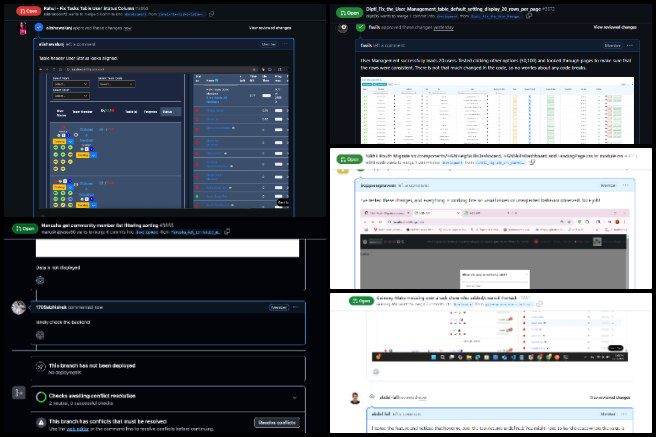
SOFTWARE PR REVIEW TEAM G-N
The PR Review Team’s summary for team members’ names starting with G–N and covering their work on the Highest Good Network software was managed by Govind Sajithkumar (Software Project Manager). The Highest Good Network software is a foundation for measuring our results of helping people create their own sustainable futures. This week’s active members of this team were: Haocheng Xu (Developer), Kedarnath Ravi Shankar Gubbi (Software Engineer), Kurtis Ivey (Full Stack Developer), Nahiyan Ahmed (Full Stack Software Developer), Nathan Hoffman (Software Engineer), and Neel Singh (Software Engineer). They reviewed all the Highest Good Network PRs (Pull Requests) shared in this week’s update. Learn more about how the Highest Good Network measures helping people create their own sustainable futures by exploring the Highest Good Network open-source hub. The collage below shows a compilation of the work from this team.
SOFTWARE PR REVIEW TEAM O-Z
The PR Review Team’s summary for team members’ names starting with O–Z and covering their work on the Highest Good Network software was managed by Jaiwanth Reddy Adavalli (Software Project Manager). The Highest Good Network software is a foundation for measuring our results of helping people create their own sustainable futures. This week’s active members of this team were: Pranav Govindaswamy (Software Developer), Prasanth Bhimana (Software Engineer), Saicharan Reddy Kotha (Software Engineer), Shreyas Bedekar (Software Engineer), Varsha Karanam (Software Engineer), Veda Bellam (Software Engineer), Venkataramanan Venkateswaran (Software Engineer), and Yiyun Tan (Software Engineer). They reviewed all the Highest Good Network PRs (Pull Requests) shared in this week’s update. Learn more about how the Highest Good Network measures helping people create their own sustainable futures by exploring the Highest Good Network open-source hub. The collage below shows a compilation of the work from this team.
AND WE PRODUCED THIS WEEKLY UPDATES BLOG – CLICK HERE TO SUBSCRIBE
FOLLOW ONE COMMUNITY’S PROGRESS (click icons for our pages)
INVESTOR PAGES
GET INVOLVED
DONATE | WAYS ANYONE CAN HELP | MEMBERSHIP
CLICK HERE FOR ALL PAST UPDATES
 One Community
One Community